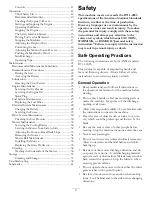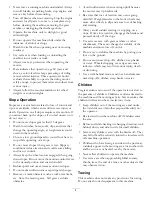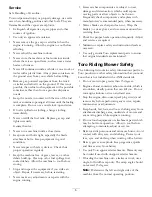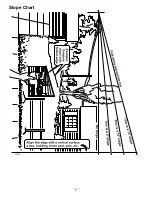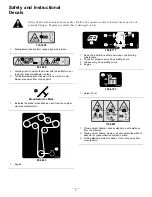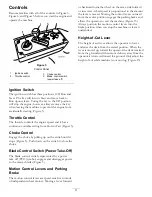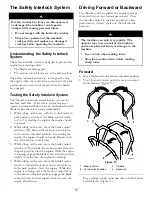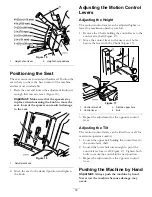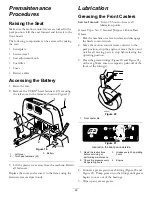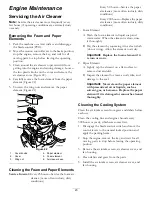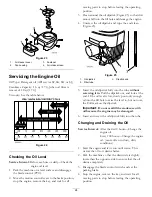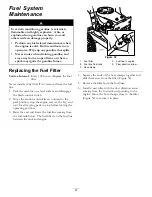
In certain conditions during fueling, static
electricity can be released causing a spark
which can ignite the gasoline vapors. A fire
or explosion from gasoline can burn you and
others and can damage property.
•
Always place gasoline containers on the
ground away from your vehicle before filling.
•
Do not fill gasoline containers inside a
vehicle or on a truck or trailer bed because
interior carpets or plastic truck bed liners
may insulate the container and slow the loss
of any static charge.
•
When practical, remove gas-powered
equipment from the truck or trailer and
refuel the equipment with its wheels on the
ground.
•
If this is not possible, then refuel such
equipment on a truck or trailer from a
portable container, rather than from a
gasoline dispenser nozzle.
•
If a gasoline dispenser nozzle must be used,
keep the nozzle in contact with the rim of
the fuel tank or container opening at all
times until fueling is complete.
Gasoline is harmful or fatal if swallowed.
Long-term exposure to vapors can cause serious
injury and illness.
•
Avoid prolonged breathing of vapors.
•
Keep face away from nozzle and gas tank or
conditioner opening.
•
Keep gas away from eyes and skin.
Using Stabilizer/Conditioner
Use a fuel stabilizer/conditioner in the machine to
provide the following benefits:
•
Keeps gasoline fresh during storage of 30 days or
less. For longer storage it is recommended that the
fuel tank be drained.
•
Cleans the engine while it runs
•
Eliminates gum-like varnish buildup in the fuel
system, which causes hard starting
Add the correct amount of gas stabilizer/conditioner
to the gas.
Note:
A fuel stabilizer/conditioner is most effective
when mixed with fresh gasoline. To minimize the
chance of varnish deposits in the fuel system, use fuel
stabilizer at all times.
Gasoline/Alcohol blends
Gasohol (up to 10 percent ethyl alcohol, 90 percent
unleaded gasoline by volume) is approved for fuel use
by the engine manufacturer. Other gasoline/alcohol
blends are not approved.
Gasoline/Ether blends
Methyl Tertiary Butyl Ether (MTBE) and unleaded
gasoline blends (up to a maximum of 15 percent MTBE
by volume) are approved for fuel use by the engine
manufacturer. Other gasoline/ether blends are not
approved.
Filling the Fuel Tank
1. Shut the engine off and set the motion controls to
the park position. Raise the seat so the gas tank is
visible while fueling.
2. Clean around the fuel tank cap and remove the cap.
3. Add unleaded regular gasoline until the body of the
tank is full but fuel does not fill the neck of the
tank (Figure 7). This space in the neck of the tank
allows gasoline to expand. Do not fill the fuel tank
completely full.
4. Install the fuel tank cap securely. Wipe up any
gasoline that may have spilled.
13



